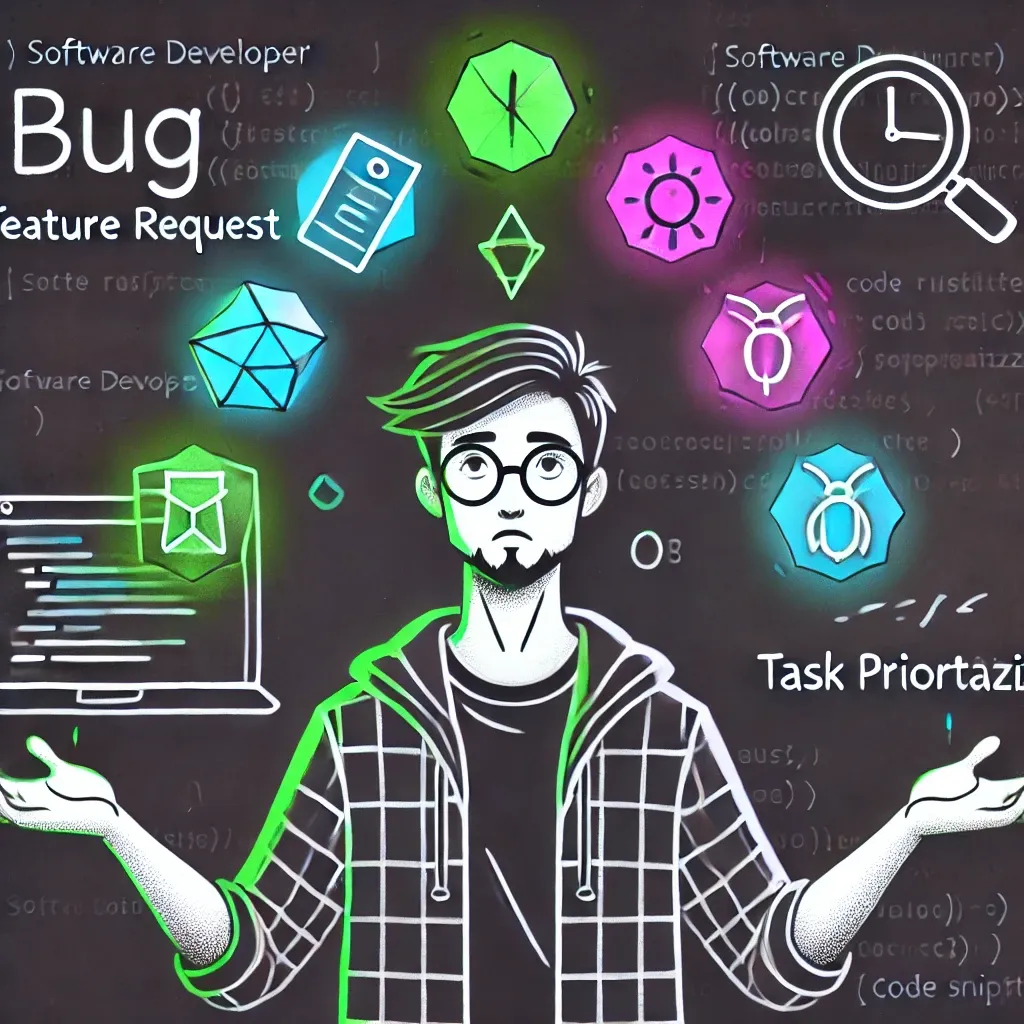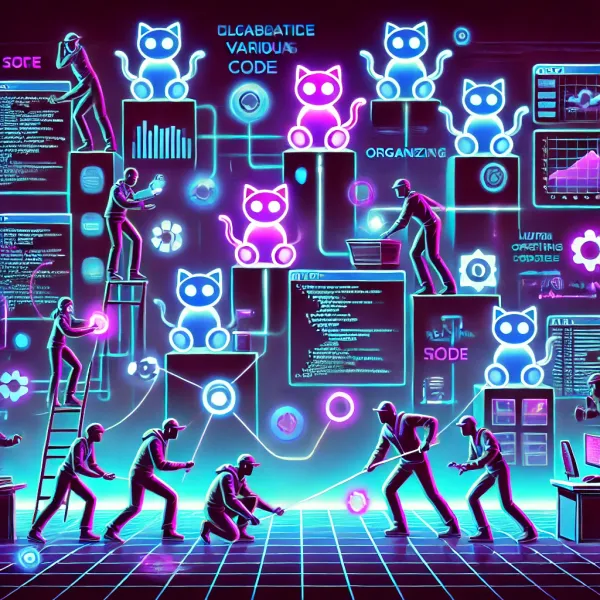Task Prioritization in Software Development: A Comprehensive Guide
Learn how effective task prioritization can boost productivity, prevent delays, and enhance project success in software development.

The Critical Role of Task Prioritization in Software Development
Poor task prioritization means missed deadlines, project overruns, and frustrated developers. Whether you're at a startup or a large team, prioritization is key to keeping projects on track and staying sane.
In software development, getting your priorities straight is what prevents endless nights of 2 AM debugging. It's the key to productivity and project success. This guide explores strategies and tools to help you prioritize tasks effectively.
🔑 Key Takeaways 🔑
- Effective task prioritization boosts productivity, prevents delays, and enhances project outcomes.
- Techniques like MoSCoW, Kano Model, RICE, and Eisenhower Matrix can streamline decision-making.
- Use project management and automation tools to support prioritization efforts.
- Regular reassessment of priorities ensures that tasks stay aligned with project goals and changing requirements.
Understanding Task Prioritization
Task prioritization is basically deciding which fires to put out first—and which ones can smolder for a while without burning down the whole place. In software development, this means deciding what features, bug fixes, or updates should be prioritized to ensure the success of a project.
Effective task prioritization helps teams focus, allocate resources efficiently, and deliver projects on time. It reduces wasted effort and keeps everyone aligned on what truly matters.
Common Challenges in Task Prioritization
Scope Creep: Scope creep is like that uninvited guest who eats all your snacks and then asks to crash on your couch indefinitely. Without clear boundaries, new features keep piling on, and suddenly your critical tasks are buried under a mountain of 'nice-to-haves.'
Conflicting Stakeholder Interests: Balancing stakeholder priorities can feel like trying to split a pizza between vegans and meat lovers. Business leaders want flashy features for customers, while developers just want to tackle that mountain of technical debt—finding the balance is where the magic happens.
Resource Constraints: Limited resources—whether it's time, money, or people—can turn prioritization into a game of Tetris. You have to make everything fit, and sometimes you just need to let go of the piece that doesn’t.
Proven Task Prioritization Techniques
MoSCoW Method: The Must have, Should have, Could have, and Won’t have framework helps teams clearly categorize tasks based on necessity and project impact.
Kano Model: This model categorizes features based on how much they contribute to customer satisfaction. It helps teams focus on what will delight users without overloading them with unnecessary complexity.
RICE Scoring: Reach, Impact, Confidence, and Effort (RICE) is a great model for prioritizing tasks. It quantifies each task based on its potential value versus the effort it will take, allowing for data-driven decisions.
Eisenhower Matrix: The Urgent vs. Important matrix helps determine which tasks need immediate action and which can be scheduled or delegated. It’s particularly useful in day-to-day task management.

Implementing Prioritization Frameworks in Agile Environments
Integration with Scrum: Incorporate prioritization into sprint planning and backlog grooming. Frameworks like MoSCoW and RICE can help decide which tasks make it into the next sprint.
Continuous Reassessment: Agile projects are dynamic. Regular reassessment of priorities is necessary to adapt to changing requirements and ensure that the focus remains on the most impactful tasks.
Tools to Aid Task Prioritization
Project Management Software: Tools like Jira, Trello, and Asana are great for tracking and prioritizing tasks. They help teams visualize their workload, manage dependencies, and ensure nothing falls through the cracks.
Automation Tools: Automation can help manage repetitive tasks, freeing up time for more valuable work. Tools like Zapier or GitHub Actions can be used to streamline administrative tasks.
Case Studies: Successful Task Prioritization in Action
Case Study 1: Implementing the MoSCoW Method to Enhance Project Delivery
A software development team faced recurring project delays due to scope creep and unclear prioritization of features. To address these challenges, they adopted the MoSCoW prioritization technique, categorizing tasks into Must have, Should have, Could have, and Won't have.
Implementation:
- Must Have: Identified critical features essential for the project's success.
- Should Have: Recognized important but not vital features that add significant value.
- Could Have: Listed desirable features that enhance user experience but are not crucial.
- Won't Have: Determined features to be excluded in the current release to prevent scope expansion.
By clearly defining these categories, the team stopped sweating the small stuff and zeroed in on delivering the essentials. They got the must-haves done first, and anything extra was just icing on the cake.
Results:
- Reduced Delays: Prioritizing Must Have features led to timely project completions.
- Controlled Scope: The Won't Have category effectively prevented unnecessary scope expansion.
- Improved Stakeholder Satisfaction: Delivering essential features on time enhanced client trust and satisfaction.
This case demonstrates that implementing the MoSCoW method can streamline development processes, reduce delays, and improve overall project outcomes.
Case Study 2: Enhancing Product Quality with the Kano Model
A startup developing a new mobile application faced challenges in determining which features would most effectively satisfy and delight users. To address this, they implemented the Kano Model, a framework that categorizes customer preferences into five categories: Must-Be, One-Dimensional, Attractive, Indifferent, and Reverse.
Implementation:
- Customer Surveys: The team conducted surveys asking users how they would feel if a specific feature was present or absent, aligning with the Kano Model's methodology.
- Feature Categorization: Based on survey responses, features were classified into the Kano categories.
- Prioritization Strategy: The team focused on implementing Must-Be and One-Dimensional features first to meet basic and performance needs, followed by Attractive features to delight users.
Results:
- Improved User Satisfaction: By addressing Must-Be and One-Dimensional features, the application met essential user expectations, leading to increased satisfaction.
- Enhanced User Engagement: Incorporating Attractive features resulted in higher user engagement and positive feedback.
- Efficient Resource Allocation: The Kano Model enabled the team to prioritize development efforts effectively, avoiding time spent on Indifferent or Reverse features.
This case illustrates how utilizing the Kano Model can guide startups in prioritizing features that enhance product quality and align with user expectations.
Best Practices for Effective Task Prioritization
Stakeholder Engagement: Get stakeholders in the loop early, or prepare for a lot of last-minute 'urgent' requests that derail everything. Early involvement means fewer surprises and less drama.
Clear Criteria Establishment: Define transparent criteria for evaluating and prioritizing tasks. This can include factors like impact, effort, customer value, and risk.
Flexibility and Adaptability: Stay flexible—priorities are like weather in the mountains; they change fast. Regular check-ins are your chance to adapt and keep everyone rowing in the same direction.
Common Pitfalls and How to Avoid Them
Over-Prioritization: Labeling too many tasks as high-priority can dilute focus and lead to burnout. Be selective about what truly deserves urgent attention.
Neglecting Team Input: Task prioritization shouldn’t happen in isolation. Consider team feedback to ensure priorities are realistic and that everyone understands the "why" behind each decision.
Enhancing Software Development Through Strategic Task Prioritization
Effective task prioritization is your secret weapon in software development. Master the art of MoSCoW and RICE, leverage the right tools, and you'll see productivity skyrocket—and maybe even enjoy your weekends again.
Stop putting out fires and start building features. Implement these techniques now, get your stakeholders on board, set clear criteria, and watch your productivity soar—and maybe even take that much-needed break.
Make prioritization a part of your culture, and watch your projects thrive.




